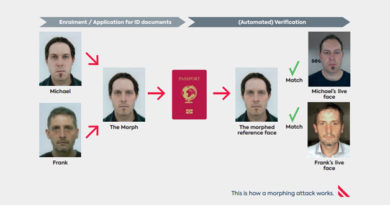Fiber Detection and Ranging (FiDAR) – A force multiplier for permanent persistent border surveillance
Whether a border is open or has a physical barrier, effective monitoring of border activity requires gapless and persistent surveillance along its entire length. To do this with cameras and radar is impractical due to the high cost of deployment over long distances and the associated long term maintenance requirements. Land or airborne patrols, only provide intermittent coverage and can be spotted and evaded by people attempting a border crossing. Using techniques in optical fiber analogous to those used in sonar and radar, Fiber Detection and Ranging (FiDAR) provides a low-cost method of achieving covert, long range, gapless and persistent border surveillance, with a high probability of detection and low nuisance alarm rate.
FiDAR systems use standard telecom grade optical fiber from within a buried fiber-optic cable to detect activity close to the cable. This is achieved by injecting pulses of light into the fiber which are partially backscattered as they travel the length of the fiber. The backscattered optical signals are sampled, and time sliced into individual channels corresponding to distance along the cable and then converted into acoustic signals. This results in the fiber cable acting as a very long array of independent, simultaneously sampled ‘microphones’ able to detect and locate minute vibrations generated by the activity of Items-of-Interest (IoI) such as vehicles, people, fence climbing, fence cutting, digging etc. within the vicinity of the buried cable.
The ONYX™ Sensing Unit from Sintela is the industry leading FiDAR system, selected by the US Department of Homeland Security Customs and Border Protection (CBP) for their Linear Ground Detection Program (LGDS) and is deployed along the Southwest border between the US and Mexico. For other customers ONYX™ is also used to provide perimeter surveillance around critical national infrastructure.
In a typically configuration, ONYX™ can simultaneously interrogate two 50 km optical fibers, providing 100 km coverage with a channel spacing of 10 m or less. This provided a gapless array of 10,000 independent sensing channels with each having an acoustic bandwidth of few milli-Hertz to 1,000 Hz and with enough sensitivity at the end of both fibers to detect and classify the activity of common IoI.
ONYX™ Sensing Units are typically rack mounted inside instrument cabins setback from the border or at Points of Entry. These units are connected to the front ends of the sensing fibers in cables which can be attached to fences, or as recommended best practice, buried using vibrating cable plough to a depth of 0.25-0.75 m next to the fence. Along borders, ONYX™ Sensing Units are typically deployed in pairs to provide redundancy and improve performance with primary and secondary fibers running in parallel to the border. The primary fiber is buried within a meter or so of the border fence line whilst the secondary fiber is deployed in parallel, several meters away. If an all-dielectric cable is installed, once weathered in, it becomes undetectable and cannot be defeated using electronic countermeasures. With the appropriate choice of fiber-optic cable and burial, as well as detecting surface activity the fiber cable can detect subterranean tunnelling activity. Furthermore, if deployed alongside nearby access roads and trails ONYX™ provides a further level of surveillance, able to detect the movement of illegal immigrants and the trajectory of vehicles dispatched to pick them up.
In quiet conditions the detection of activity along a sensing fiber-optic cable is relatively straightforward as the energy produced against the background noise is easy to threshold. However, in noisy background situations, where lots of activity can easily create an alarm, a more sophisticated approach is required. At Sintela we use a combination of heuristic algorithms and machine learning to identify IoI from the background noise. The machine learning algorithms we have developed are continually trained using labelled data acquired from our fleet of ONYX™ Sensing Units deployed across the world. This approach provides accurate detection, localisation, and classification of IoI, ensuring very high probabilities of detection, but crucially maintains a very low nuisance alarm rate.
Using the powerful built-in AI computer, ONYX™ can also control and process video from ONVIF compatible cameras. Once ONYX™ has detected the activity of an IoI from along a border it can send a message to the closest camera to slew-to-cue onto the precise location. Using video analytics, the video feed from this camera can then be processed within ONYX™ to classify the IoI. Combining the video feed with video classification markers whilst synchronising the video with the acoustic sound detected and the acoustic classification provided by ONYX™ provides a unique capability producing real-time detections with a high level of confidence.
ONYX™ is a low-cost, low maintenance technology providing a unique surveillance capability along borders. With its high probability of detection, accurate classification, and low nuisance alarm rate, ONYX™ is used to quickly initiate and direct the deployment of border force resources, to intercept and stop illegal border crossings.
BY David Hill, Sintela, ONYX, fibre-optics, border security, border surveillance




